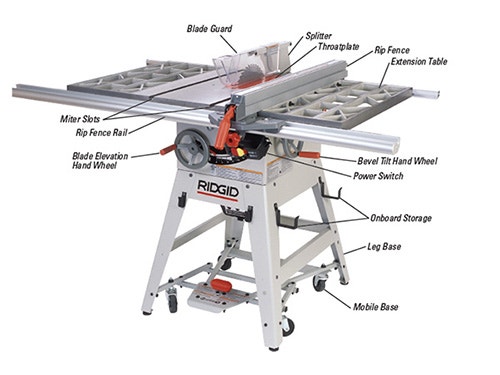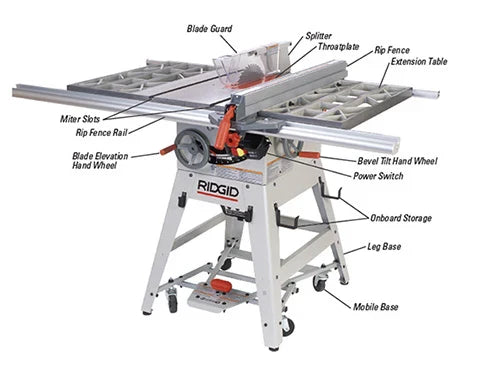Table Saw
Table Saw: Your Workshop’s Precision Powerhouse

Whether you're ripping long boards, making crosscuts, or crafting furniture-grade joinery, a table saw is the heart of any serious woodworking setup. Known for its speed, accuracy, and versatility, this tool transforms raw timber into clean, repeatable cuts. From portable jobsite saws to heavy-duty cabinet models, choosing the right table saw—and using it safely—can elevate your craftsmanship and efficiency.
Types of Table Saws
| Type | Best For | Pros | Cons |
|---|---|---|---|
| Portable | DIYers, jobsite work | Lightweight, mobile | Less stable, smaller table |
| Contractor | Semi-pro workshops | More power, larger table | Heavier, less precise than cabinet saws |
| Cabinet | Professional woodworkers | Maximum precision and power | Expensive, very heavy |
Choose based on your workspace, budget, and the scale of your projects.
Key Features to Look For
- Motor Power: 1.5–3 HP for most tasks; higher for hardwoods
- Blade Size: Typically 10" (254 mm) for general use
- Fence System: Smooth, accurate, and easy to lock
- Dust Collection Port: Keeps your workspace clean
- Safety Features: Riving knife, blade guard, anti-kickback pawls
- Table Extensions: Support large panels or long boards
Setup Tips for Accuracy and Safety
- Place on a stable, level surface
- Align the blade parallel to the miter slot
- Adjust the fence parallel to the blade
- Set blade height just above the material
- Use push sticks and featherboards for narrow cuts
- Keep the power switch accessible in case of emergency
Proper setup ensures clean cuts and minimizes risk.
Maintenance Tips
- Clean sawdust from the cabinet and motor vents
- Lubricate moving parts and fence rails
- Sharpen or replace blades regularly
- Check alignment of blade and fence
- Inspect power cord and switches for wear
Routine care keeps your saw running smoothly and safely.
Must-Have Accessories
- High-quality blades for ripping, crosscutting, or fine finish work
- Zero-clearance inserts to reduce tear-out
- Aftermarket fences for precision upgrades
- Mobile bases for easy movement in small workshops
- Outfeed tables for supporting long cuts
These upgrades improve performance and workflow.
FAQs
Can I use a table saw outdoors?
Yes, but ensure dry conditions, stable footing, and proper safety gear.
Can it cut materials other than wood?
With the right blade, yes—plastic, aluminum, and laminate are possible.
Are cordless table saws available?
Yes, some brands offer battery-powered models for jobsite flexibility.
What’s the best blade for plywood?
Use a fine-tooth blade (e.g., 80T) to minimize tear-out.
Final Thoughts
A table saw isn’t just a tool—it’s a gateway to precision and creativity. With the right setup, accessories, and care, it becomes the centerpiece of your workshop. Whether you're building cabinets or cutting framing lumber, this saw helps you work smarter, safer, and faster.




